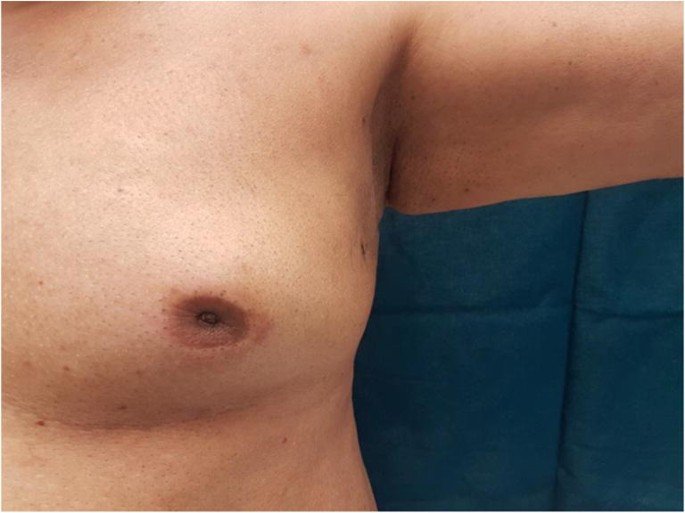Understanding Male Breast Cancer Prevention and Awareness

Introduction of Male breast Cancer
Male breast cancer is a condition characterized by the development of cancerous cells within the breast tissues. Although less common than in women, breast cancer can affect men. It may manifest at any age, with a higher incidence typically observed in men aged between 60 and 70. It’s important to note that male breast cancer accounts for a minority, constituting less than 1% of all reported cases of breast cancer.
Certainly, I will expand the article while keeping the original structure and order.
Understanding Male Breast Cancer: Causes, Symptoms, and Treatment
Breast cancer, often associated with women, is a significant concern for men too. Although male breast cancer is relatively rare, understanding its causes, symptoms, diagnosis, and treatment is crucial.
I. Male Breast Cancer: A Rare but Significant Concern
Male breast cancer is an uncommon condition, accounting for less than 1% of all breast cancer cases. While its occurrence is infrequent, it demands attention and awareness.
II. Causes and Risk Factors
Male breast cancer can be attributed to various factors:
1. Genetics: Inherited gene mutations, particularly in the BRCA1 and BRCA2 genes, can increase the risk of male breast cancer. These mutations are similar to those associated with higher breast cancer risk in women.
2. Aging: Like many other cancers, the risk of male breast cancer increases with age. It’s most frequently diagnosed in men aged 65 and older.
3. Family History: A family history of breast cancer, especially among close female relatives, can elevate the risk for men as well.
4. Klinefelter Syndrome: This genetic disorder, characterized by lower levels of male hormones and higher levels of female hormones, increases the risk of male breast cancer.
5. Radiation Exposure: Prior radiation therapy in the chest area, often used to treat other cancers, can also heighten the risk of male breast cancer.
III. Symptoms of Male Breast Cancer
The symptoms of male breast cancer often mirror those found in women and include:
1. A Lump: The most common symptom is the presence of a painless lump in the breast tissue. Men should be vigilant about any changes or lumps in the chest area and consult a healthcare provider if they notice anything unusual.

2. Breast Pain: While breast pain is less common in male breast cancer, it can still be a symptom worth noting.
3. Changes in the Nipple: Keep an eye out for changes in the nipple, such as redness, scaling, or retraction (turning inward).
4. Discharge: Discharge from the nipple, which may be bloody, is a less common but significant symptom that should not be ignored.
5. Enlarged Lymph Nodes: Swelling or lumps in the lymph nodes under the arm may be indicative of breast cancer.

IV. Diagnosis and Staging
Diagnosing and staging male breast cancer typically involves:
1. Physical Examination: Healthcare providers perform a physical exam, paying particular attention to the chest and underarm areas to identify any abnormalities.
2. Imaging: Mammography and breast ultrasound are commonly employed to evaluate breast abnormalities and gain a clearer understanding of the situation.
3. Biopsy: Confirming the presence of cancer requires a biopsy, typically conducted through fine-needle aspiration or core needle biopsy.
4. Staging: Once diagnosed, staging becomes crucial to determining the extent of the disease, aiding in treatment planning.
V. Treatment Options
The treatment of male breast cancer largely parallels that of female breast cancer and is contingent on the disease’s stage. Available treatment options include:
1. Surgery: Primary treatment often involves the surgical removal of the tumor, with choices like lumpectomy (removing the tumor and a small amount of surrounding tissue) or mastectomy (complete removal of the breast).
2. Radiation Therapy: Radiation therapy is recommended post-surgery to eliminate any remaining cancer cells.
3. Hormone Therapy: Hormone therapy is frequently utilized, particularly when the cancer is hormone receptor-positive. Medications like tamoxifen can effectively block the effects of estrogen on breast cancer cells.
4. Chemotherapy: In cases where the cancer has spread to the lymph nodes or other parts of the body, chemotherapy may be recommended.
5. Targeted Therapy: Specific types of male breast cancer may be treated with targeted therapy drugs, such as Herceptin.
6. Clinical Trials: Exploring new and innovative treatments can be an option through participation in clinical trials.
VI. Survival and Prognosis
Survival rates for male breast cancer are typically slightly lower than those for female breast cancer, often due to later diagnosis. Nonetheless, early detection and timely treatment are improving the prognosis for male breast cancer. The five-year survival rate for localized male breast cancer is approximately 84%, according to the American Cancer Society.
VII. Prevention and Awareness
Preventing male breast cancer includes understanding risk factors and taking proactive measures. Men with a family history of breast cancer or a genetic mutation should consider regular screenings and genetic counseling.
Raising awareness about male breast cancer is crucial for early detection and better outcomes. Awareness campaigns, educational initiatives, and open conversations about the condition can reduce the stigma and promote timely medical attention.
Summary
Male breast cancer, though rare, is a significant health concern. Its causes, including genetic factors and radiation exposure, make early detection and understanding of symptoms crucial. Diagnosis involves physical examination, imaging, and biopsy, with staging guiding treatment choices. Treatment options, such as surgery, radiation therapy, and targeted therapy, aim to improve survival rates. While male breast cancer has slightly lower survival rates compared to female breast cancer, early detection and timely intervention are enhancing outcomes. Preventative measures, including genetic counseling, are vital. Increasing awareness and education are essential to destigmatize the condition and encourage prompt medical attention.